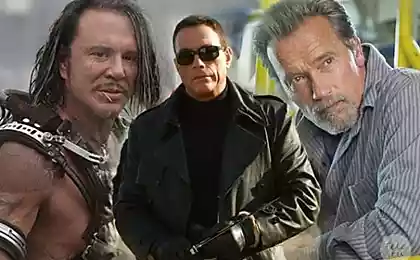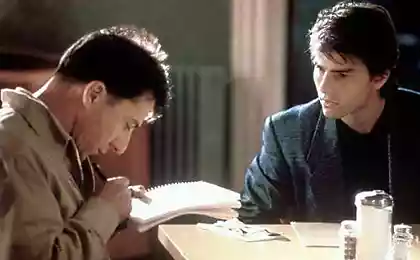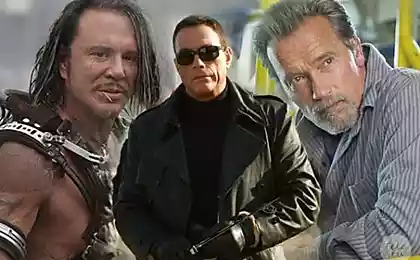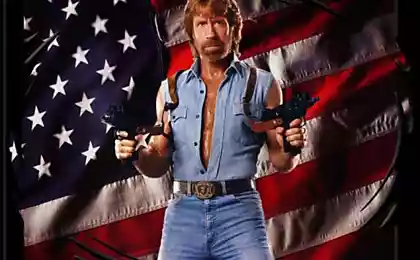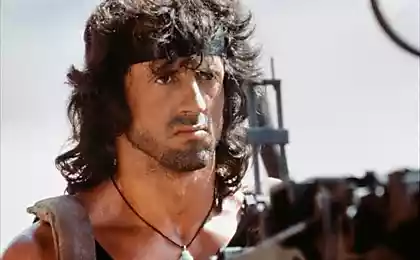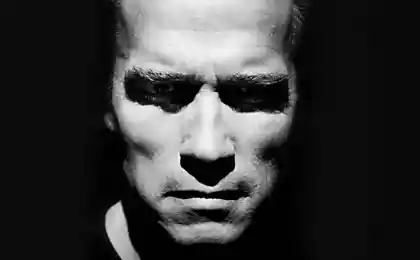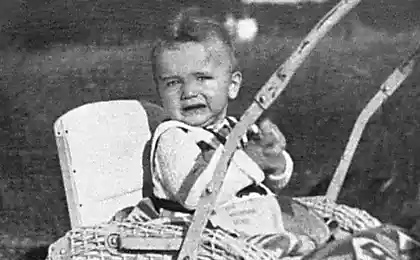223
Rocky Balboa: Motivation from Sylvester Stallone

Introduction. When it comes to inspiring movie characters, the name of Rocky Balboa invariably pops up - a stubborn boxer from the film series of the same name, created and brought to life by Sylvester Stallone. This character became a symbol of courage, perseverance and willingness to go through all the trials for the sake of their dreams. But why is it that Rocky and its spirit have been breaking records for decades? Perhaps it’s because Rocky’s story isn’t just about boxing victories, it’s also about inner transformation, finding meaning, and maintaining dignity in the most difficult of circumstances.
Sylvester Stallone himself went through a difficult path: from health problems in his childhood and rejections of agents in the film business to the status of one of the most recognizable stars in Hollywood. His character, born on the pages of the script, became “a reality” for millions of viewers around the world. In this article, we will look at the key principles on which Rocky’s motivation is built, analyze how Stallone transferred some of his beliefs to the image of a simple guy from Philadelphia, and learn that the “secret” of this character’s success in some ways resembles real psychological methods of achieving goals. We will not be tied to any dates or specific news, so that the material remains valuable and relevant at all times. Ready to feel the fighting spirit? Then let's go!

1. Modest beginnings but big dreams
The story of Rocky Balboa begins with “grey days”: he lives in a dysfunctional neighborhood, works as a debt collector, does not believe in himself and barely makes ends meet. Many people, faced with such conditions, can give up – and yet Rocky keeps the dream of something bigger inside. When he gets the chance to box against a champion, he knows he should at least try.
- Why this motivates: Rocky shows that the starting point does not always determine who we become. Even the “little man” can have a chance if he does not lose faith.
- Meaning for us: It doesn’t matter where you started, it’s about seeing that you can do more. This is the first step to change.

2. Willingness to work on yourself constantly
Many heroes of sports stories go through tough training, but Rocky takes it to the level of almost ritual feat. He rises before sunrise, runs through the streets of Philadelphia, hits a pear in a damp, dilapidated hall. It's a routine job, but it's what makes the character. From the point of view of psychology, the formation of systemic habits increases the likelihood of success at times, because regular repetition of actions leads to the development of “muscle memory” – not only in sports, but also in any field.
- The scientific view: According to the NCBI, long-term practice and repetition form stable neural pathways in the brain and body that reinforce the necessary skills.
- Conclusion: Set a goal not just to exercise (or learn) from time to time, but to develop a clear schedule of regular workouts for the mind and body.
3. Belief in yourself without external support
Rocky had no fame, no resources, and no “profitable connections.” Moreover, many people looked at him with bewilderment: why try, if “all the same” the chances are small? But he continued to believe he could at least "hold on to the ring." Sometimes we have to face situations when others doubt our abilities.
- Why is that necessary? High self-esteem, based on real steps (such as training), becomes a foundation that does not collapse at the first setbacks.
4. Don’t be afraid to look vulnerable.
Sylvester Stallone shows Rocky as a hero who can cry, worry, doubt. He doesn’t try to hide his vulnerability under the guise of a superhero. And that is what makes it human and close to many viewers. Modern psychology believes that awareness and acceptance of one’s own vulnerability is an important element of personal growth.
- How it helps: A person who accepts himself with “flaws” is often more resistant to stress than someone who tries to play the role of “perfect.”
5. Focus on the process, not the outcome
When Rocky prepares for a fight, his goal is not necessarily to beat the champion, but to "stand all rounds," to show that "he's not an empty place." Psychological trick: focus on achieving specific milestones rather than abstract victory. This approach reduces anxiety and helps maintain motivation even if the end goal seems too far away.
- Council: Break down global goals (whether writing a book, starting a startup, or losing weight) into sub-steps with clear success criteria.
6. Environmental strength and support
Although Rocky is the "lone wolf" at the beginning, he receives moral support from Mickey's coach, Adrian's friend, and later from his fellow audience members. We see that the right environment can “pull up” and inspire when the forces are running out.
- Scientific fact: A support group, whether it’s family, friends or co-workers, significantly increases our psychological resilience. This is confirmed by numerous social experiments.
- Practice: Find your team, interested people who will help and inspire.
7. Flexibility in difficult situations
Rocky often faces the fact that plans break down, health fails or circumstances become unbearable. But he retains flexibility and looks for ways to adapt: changing tactics in the ring, looking for a new job when boxers are not appreciated. This “adjustment” is essential in a world where change happens all the time.
- Recommendation: Exercise “adaptability” by regularly analyzing emerging problems and developing new strategies, rather than persisting in dead-end options.
8. Don’t forget the philosophy of small steps.
Rocky’s long run through Philadelphia, hundreds of climbs up the stairs to the art museum, countless punches on the pear – all this embodies the principle of “small steps lead to a big breakthrough”. If you think the task is impossible, take one step a day, but do it.
- The role of psychology: When the brain sees progress, even small progress, it begins to produce dopamine, the reward hormone. It feeds further motivation.
9. Accepting failure as part of the journey
In the movie, Rocky repeatedly suffers defeats, not always winning fights, difficult periods of life. However, he returns to the ring, not seeing the “end of the world” in failure. In real life, this attitude provides huge benefits, because failure becomes a “lesson” rather than a “sentence.”
- How to implement: After any failure (a failed project, a failed interview), ask, “What exactly went wrong and what will it teach me?”
10. Maintaining self-confidence at a distance
After all, the main thing that characterizes Rocky is constant persistence. He believes that with enough training and perseverance, you can reach significant heights. This “long-term” attitude is the key to any goals that require time and discipline.
- Where to get inspiration: Some people are charged with quotes or memories of past successes. Others read biographies of great athletes and businessmen. It is important to find your source of fire.
- Final result: Persistence and self-attitude create the foundation on which the whole construction of success rests.
Conclusion
The image of Rocky Balboa, created and embodied by Sylvester Stallone, is not just the story of the “simple American dream”. The deep meaning of Rocky films reflects the universal principles of self-realization, adaptation to difficulties and a conscious, persistent spirit. Motivation from Rocky includes a willingness to fail, the ability to benefit from every challenge, and the need to build the right team around you. All this, supported by real psychological and physiological research, shows that man is capable of more than he thinks of himself.
If you’re looking for an extra boost of energy, consider Rocky’s legendary training scenes, his journey from the dark halls to the big rings. The strength of this hero is not in magical talent - he is not a superman, he is an ordinary person with great perseverance and kindness, a willingness to work on himself and not be afraid to show his weakness. Stallone, who put a lot of personal experiences into this image, showed us how an “unchangeable” dream can regenerate the biography of an ordinary guy from the outskirts of the city into a symbol of an entire era.
You can remain a “viewer” and admire this story from the outside, but it is much more interesting to apply its lessons to your own life. After all, somewhere inside each of us lives “Rocky”, who is ready to get up early in the morning and begin his “race” to a dream, even if modest and not as bright as in the movies. The main thing is to take the first step, the second, the third ... and each time wonder what we are capable of if we do not give up.
Secrets of communication: 10 ways to become a good interlocutor
Motivational quotes for moving forward: the 27 strongest

